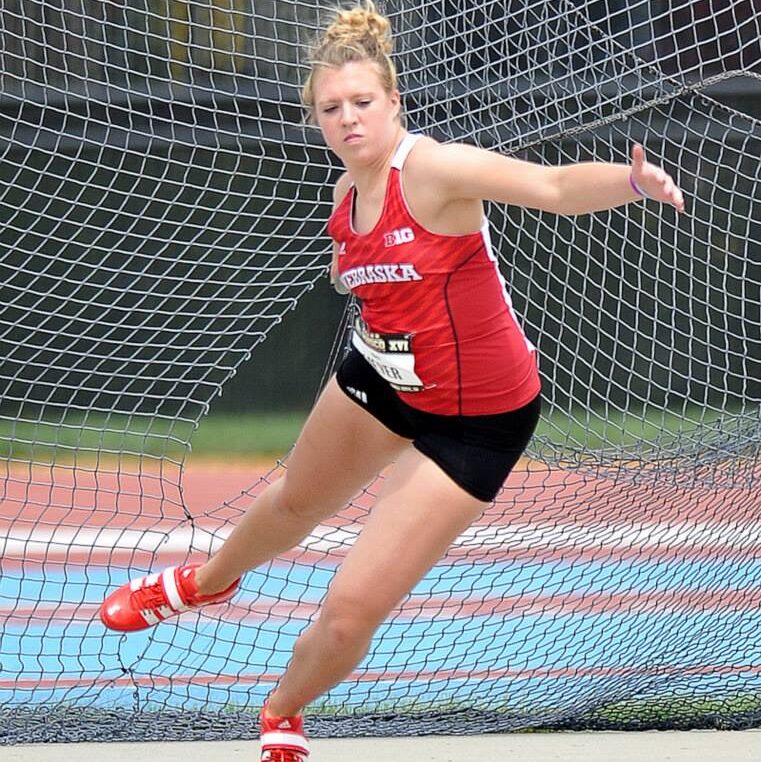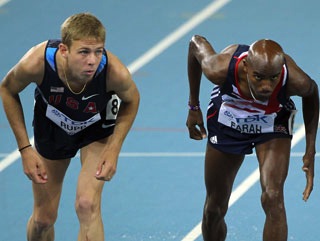
Can Training Change Muscle Fibers?
All individuals have different capacities to perform aerobic or anaerobic activity, partly based on muscle fiber composition. Not everyone is born with 50% slow-twitch fibers and 50% fast-twitch fibers. There is a wide variation of slow-twitch and fast-twitch muscle fibers types within each individual; some muscles have slow-twitch fibers, and some muscles have more fast-twitch fibers (Simoneau & Bouchard, 1989). Studies have shown that training to generate speed, strength with high power outputs will change the myosin forms in the muscle. Improvements in performance will be based on physiologically changes from training, which includes adaptations to specific muscle fibers.
Muscle fibers types can be influenced by training intensity and duration. Fast-twitch fibers respond better to high intensity training, and slow-twitch muscle fibers respond to endurance training.

Track and Field Training and Muscle Fibers
Speed and Power Athletes, Genetics and Training
A study by Liu, Schlumberger, Wirth, Schmidtbleicher, & Steinacker (2003), showed the number and type of motor units and muscle fiber types are genetic but trainable to induce muscle fiber transitioning to another type based mainly on exercise intensity and duration.
Speed and power athletes such as sprinters are born with a higher percentage of fast-twitch muscle fibers. With consistent explosive, powerful training, sprinters can improve performance in part due to muscle fiber conversion. Along with more fast-twitch muscle fibers, explosive and maximal efforts lead to a more productive anaerobic pathway that can generate more power and fire more rapidly when appropriately conditioned.
Muscle fibers percentages can change with training; strength training combined with ‘maximum contraction’ exercises and explosive efforts will lead to an increase in type IIa muscle fibers and a decrease in type I muscle fibers (Liu, Schlumberger, Wirth, Schmidtbleicher & Steinacker, 2003).
Genetics and Strength
Athletes born with more type II muscle fibers have a higher number of fast motor units, which results in the ability to gain strength faster and get stronger overall as a result of strength training (Zatsiorsky & Kraemer, 2006). These athletes are genetically predisposed for the speed and power events since fast-twitch muscle fibers, and faster (larger) motor units will produce greater force in a shorter amount of time than slow-twitch muscle fibers and slower (smaller) motor units.
Endurance Athletes, Genetics and Training
It is well known that endurance athletes have more slow-twitch fibers than speed and power athletes; this is a result of genetics and training. Endurance training may increase slow-twitch fibers as fast-twitch fiber percentages decrease. In one study, after six weeks of endurance-based training, type I muscle fibers increased 14 percentage and type IIx fibers decreased 24 percent (Howard, Hoppeler, Claassen, Mathieu, & Straub, 1985).
Research by Horowitz, Sidossis, & Coyle (1994) concluded that endurance runners could transform type II muscle fibers to type I muscle fibers with training the oxidative phosphorylation (aerobic) energy system. Other adaptations from endurance training besides muscle fiber conversion include increasing mitochondria, which leads to improvements in aerobic power and aerobic capacity (Horowitz, Sidossis, & Coyle, 1994).

Muscle Fibers and Energy Systems
The cross-bridge cycling rate determines the energy consumed by the muscle during muscle contractions. Type IIx muscle fibers that innervate with fast and fatigable motor units generate five times as much power as type IIa muscle fibers, creating immediate power that is exhausted within seconds.
Research conducted by Sargeant (2007) showed how muscle fiber types and ATP availability from different energy systems change based on exercise intensity. Type II muscle fibers and the anaerobic energy system are responsible for energy production in short burst (25 seconds or less) of high intensity exercise and are exhausted quickly.
Can training change muscle fibers?
According to a study by Williamson, Gallagher, Carroll, Raue, and Trappe (2001), training decreases the number of hybrid muscle fibers transforming muscle fibers based on the intensity of exercise. The intensity and duration of consistent training activities will determine which direction hybrid muscle fibers transform, explosive efforts will lead to a change to type II muscle fibers, whereas aerobic-based training will result in a switch to type I muscle fibers (Williamson, Gallagher, Carroll, Raue, & Trappe, 2001).
Low intensity training will result in more fibers demonstrating characteristics of slow twitch muscle fibers. High intensity training will result in more fibers reacting like fast twitch muscle fibers.








